 |
Wolverhampton's Listed Buildings
The Horsman Fountain, the Harris Memorial
and the War Memorial
St. Peter's Gardens, Lichfield Street
|
 |
|
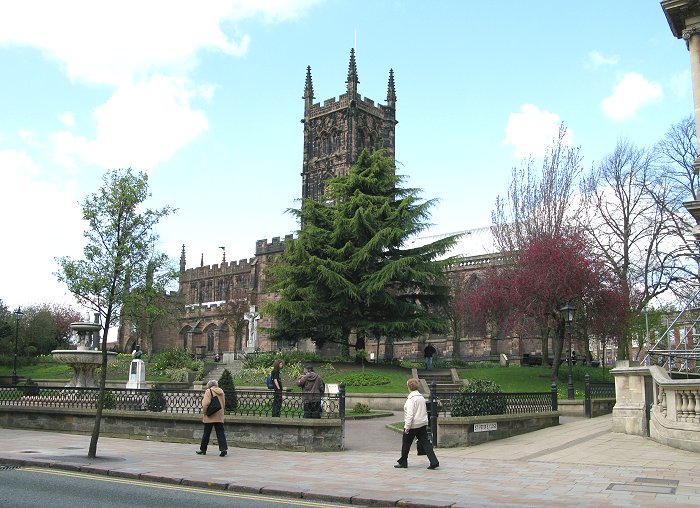
St. Peter's Gardens, with the Horsman
Fountain and the Harris Memorial on the right. |
|
Listings:
Horsman Fountain: 1894. Ashlar on granite base. Erected in
memory of Philip Horsman, a generous benefactor to the town, who gave the
adjacent Art Gallery.
Harris Memorial: 1917-19. Bust by R. J. Emerson. Bust of a
sailor has a cap band of H.M.S. Admirable. Plaque to front has inscription
recording heroic death of Harris and relief shows him slumped in the ship's
wireless room. Seaman Harris was killed in the Adriatic Sea while remaining at
his post in the wireless room of the crippled drifter Floandi.
Literature: George Noszlopy and Fiona Waterhouse,
Public Sculpture of Staffordshire and the Black Country, Liverpool
University Press, 2005, at p.195-197.
Comment: Lichfield Street and the buildings along it are among
the most important parts of central Wolverhampton. The street is an ancient one,
leading from the central market in High Green (now Queen Square) to all points
west. But in the late 19th century it was cleared and widened; what we see now
are all buildings of around that time. The area of the gardens was once part of St. Peter's churchyard.
The church gave it (and the cost and bother of maintaining it) to the town.
The graves were cleared and gardens created. The arrangement of the
gardens has undergone many changes from time to time, the most recent being
finished in 2004, replete with "interpretation panels".
|
|
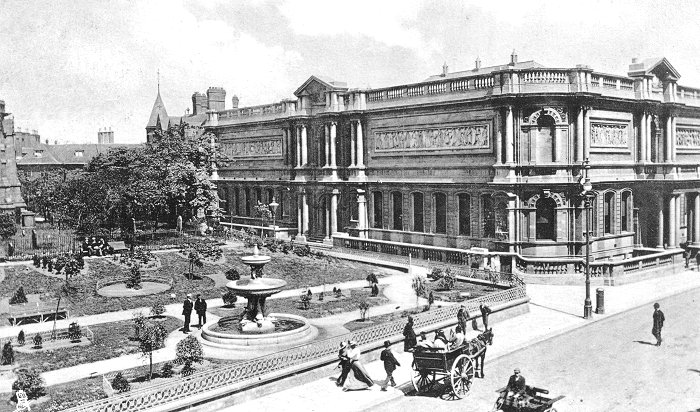
A view of the gardens and the art gallery, from an early 20th century
postcard. |
|
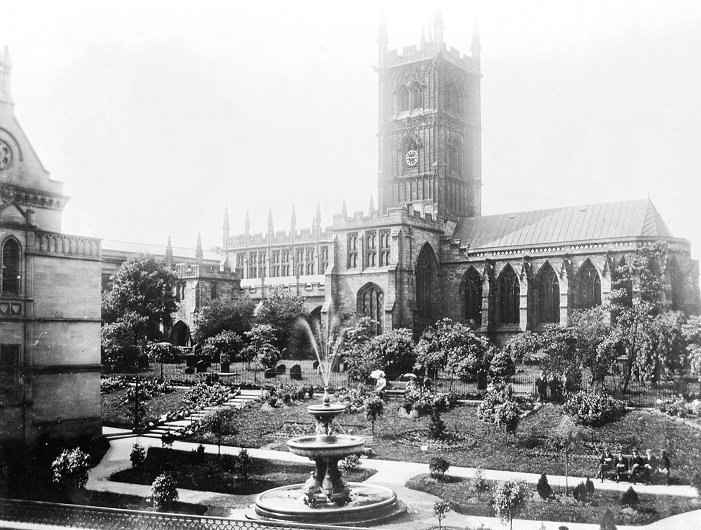
Another early 20th century view, also from
an old postcard. |
|

Another postcard view from the early 20th
century. |
| When the area of the gardens and fountain shown here was being cleared, the
building then on this site was demolished and found to contain within it a
medieval chimney breast with, carved into it, the arms of the Merchant Staplers
and others. It has therefore been suggested that this was the site of some kind
of medieval merchants' hall, and the central point for the
wool trade of early Wolverhampton. |
|
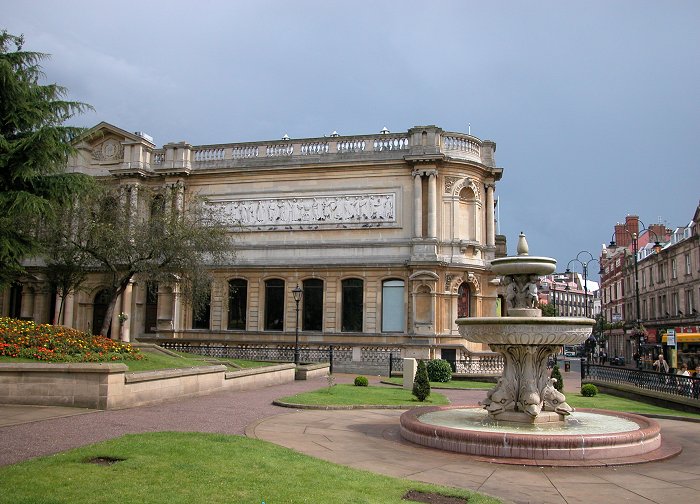
A view of the gardens showing the art
gallery and the Horsman Fountain. |
| The Horsman Fountain was unveiled by Mrs. Mander, the Mayoress, in
(according to W. H. Jones) 1896 (not 1894); but Jones is not terribly
reliable on dates. According to Noszlopy and Waterhouse the sculptors were
Messrs Farmer and Brindley; it has a red granite lower bowl and the
rest is in "stone"; six dolphins support the central bowl and four putti support
the upper bowl. They also cite a letter from Farmer and Brindley, dated
21st February 1895, saying that they would be late in delivering
the fountain because of difficulty in getting the red granite
for the lower bowl. This means the listing date of 1894
must be wrong and Jones, for once, is probably right in giving
1896. |
|
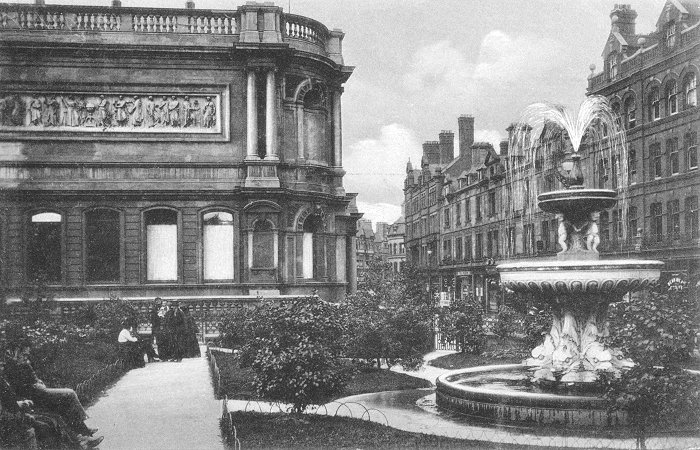
An early 20th century view of the
fountain. From an old postcard. |
| Horsman was a self made man who became a very successful building
contractor; amongst other things he built the town hall. He also
built the art gallery and is named as its founder because it was built
on his initiative and he contributed £8,000 towards the cost (and his
firm built it). But the city council provided the site and other
people provided the initial contents. The following words are inscribed
round the fountain bowl: "This fountain was erected by public
subscription in grateful recognition of the generosity of the late
Philip Horsman, J.P., who presented the adjoining art gallery and other
philanthropic gifts to the town". His other major
"philanthropic gift" to the town was the Eye Infirmary, of which he was
one of the founders and to which he contributed £5,000. He also
rescued the Blind School in Victoria Street by giving £800 (and
persuading others to give generously). Jones described him as
"being of a modest and retiring nature ... and was considered a quiet,
unostentatious man, of a kindly disposition". |
|
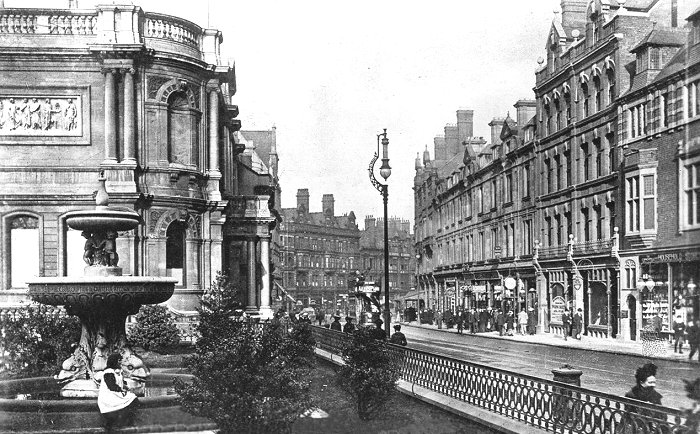
Another early 20th century view from an
old postcard. |
|
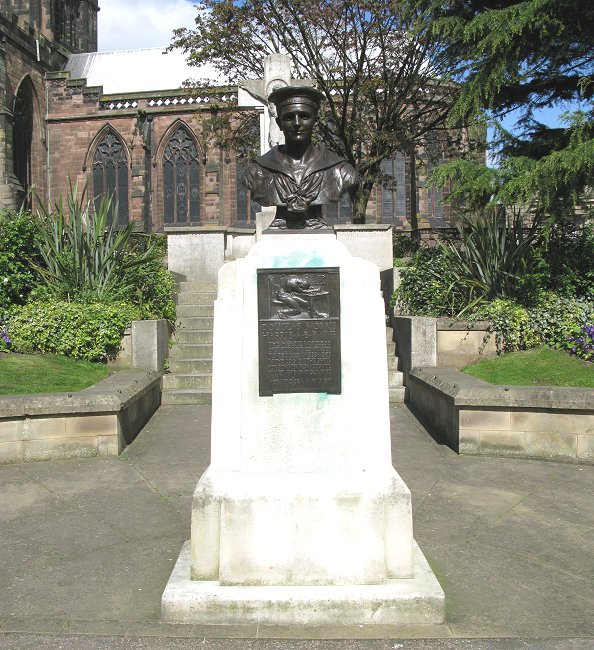
The Harris Memorial. |
| The Harris Memorial is by Robert Jackson Emerson
(1878-1944), a sculptor in his own right and with a small but
varied output, but chiefly occupied as a teacher of sculpture
and drawing at the Wolverhampton Municipal School of Art from
1910 to 1942. He was very highly regarded as a teacher and
very successful; Sir Charles Wheeler was one of his first
pupils.
Emerson carried out the somewhat similar John Henry Carless
Memorial in Walsall; and the quite dissimilar, but extremely
effective, War Memorial that originally stood in the yard of
Butler's Springfield Brewery and is now at the Black Country
Living Museum. He also executed the frieze of Mercury above the entrance to
the Express & Star building in Queen Street. |
|
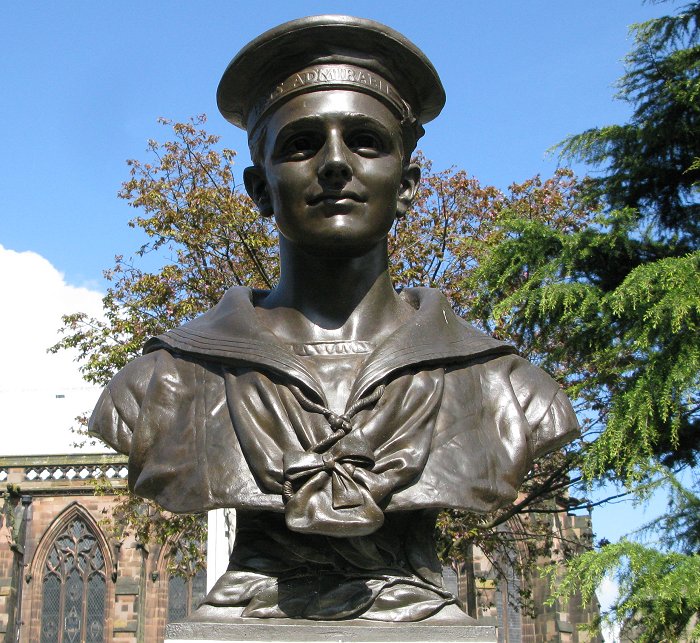
A close-up view of the memorial. |
|
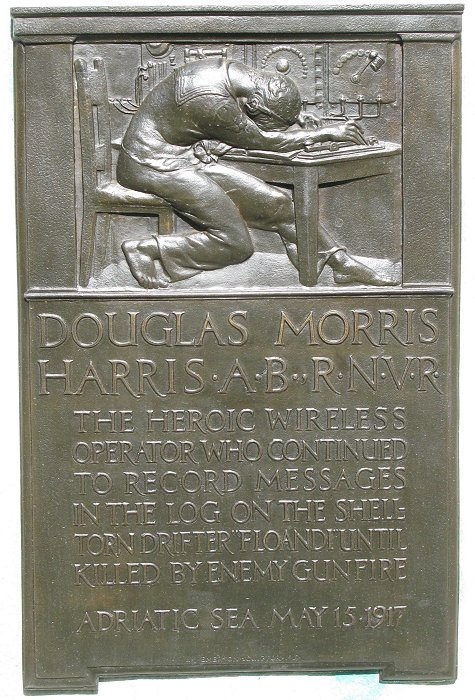
The plaque on the front of the memorial. |
|
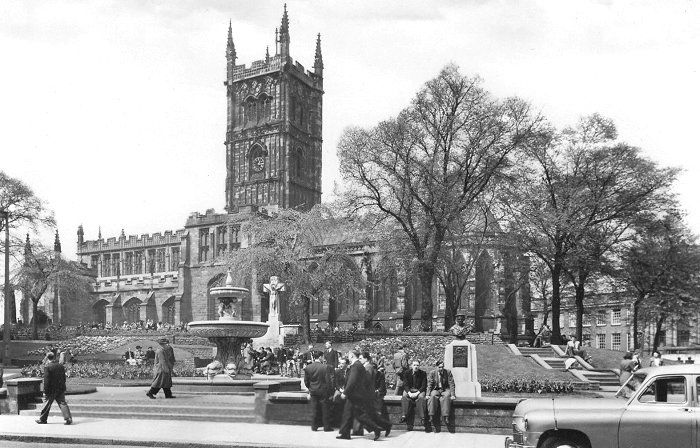
A 1960s view of the gardens showing the
Harris memorial in its original position. |
| Harris (who came from Penn and had worked in a bakery before signing
up) is shown life-size, with the name "Admirable" on his cap, that being
the name of the ship to which he was originally posted. He was on
loan to the Floandi, of the Italian navy, when it came under heavy fire. Harris stuck to his post and continued sending messages and making
entries in his log, until he was killed by a piece of shrapnel. He
died on 15th May 1917 and does not seem to have received any award from
this country, though he was posthumously given a high award by the
Italians. And Wolverhampton did not forget him. This
memorial was paid for by public subscription. |
|
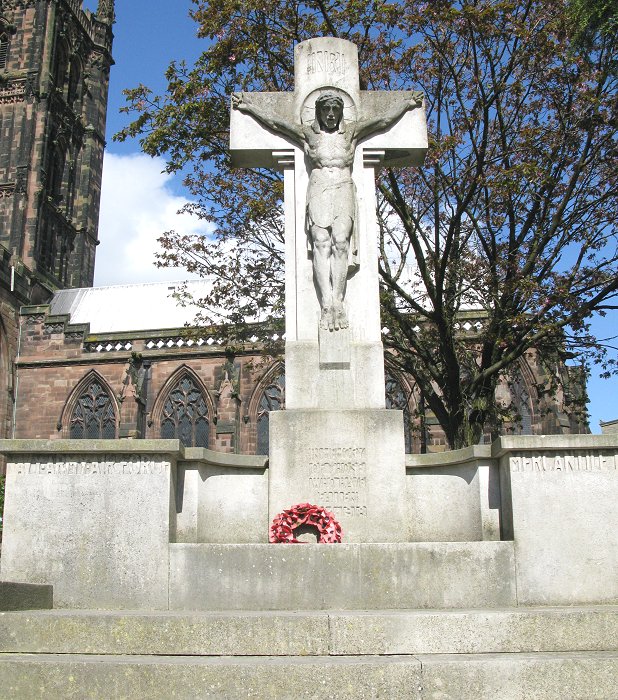
St. Peters Gardens War Memorial. |
| The war memorial was Grade II listed on 31st March, 1992.
The listing is as follows: War Memorial. c1920. Portland stone
ashlar. Crucifix on base with walls curving forward ending in
piers with raised letters in sunk bands giving names of
Services; steps below. Included for group value. |
|
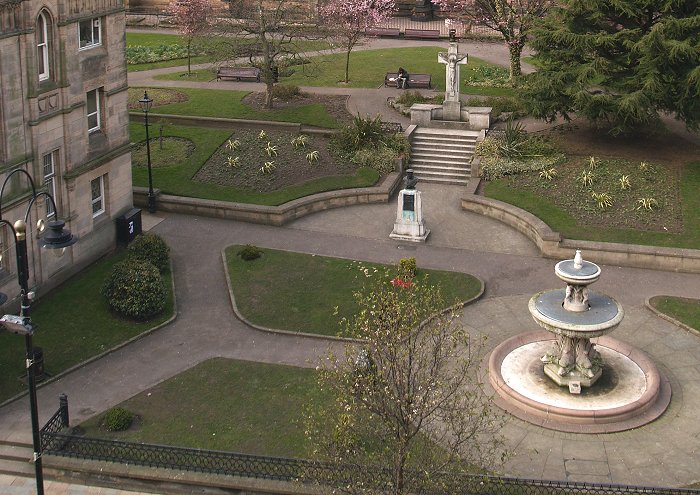
A view of the gardens from the offices in
Lichfield Street. |
|
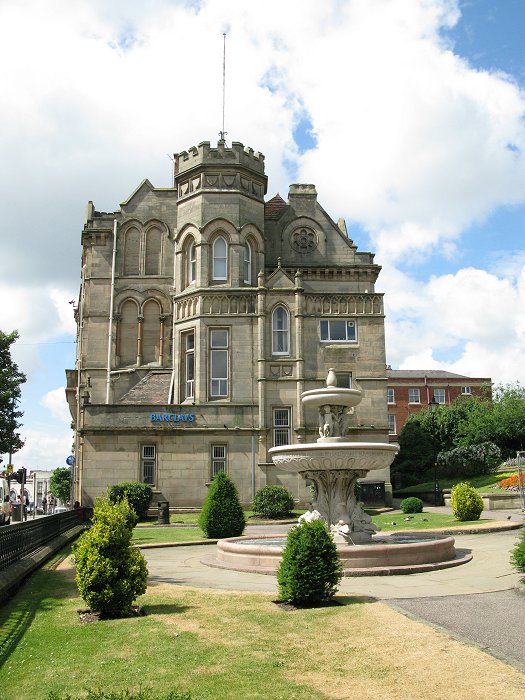
A final view of the fountain. |

|
|